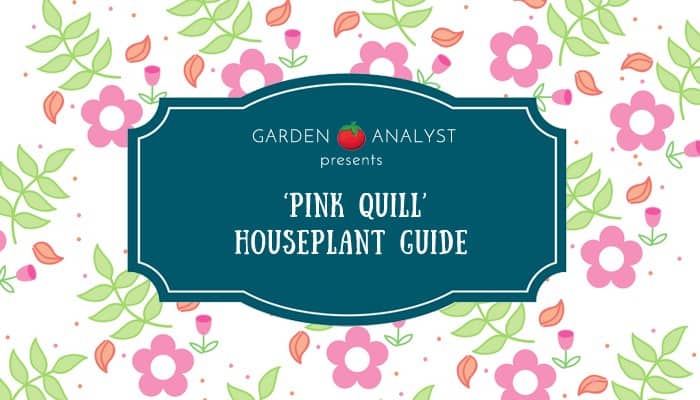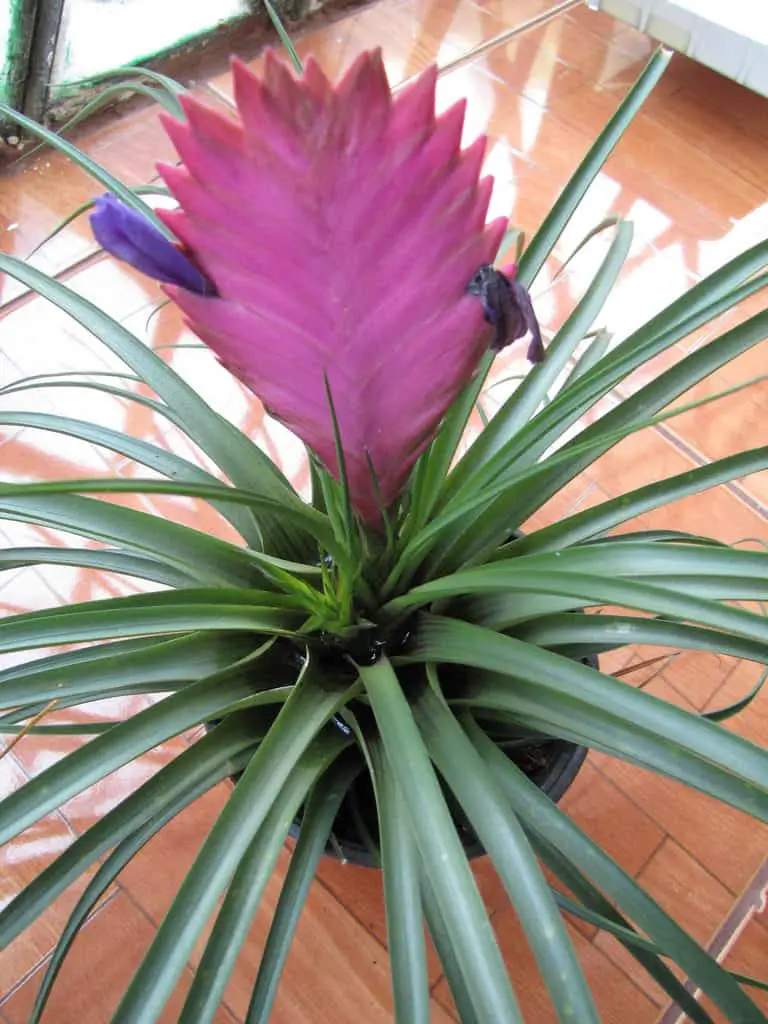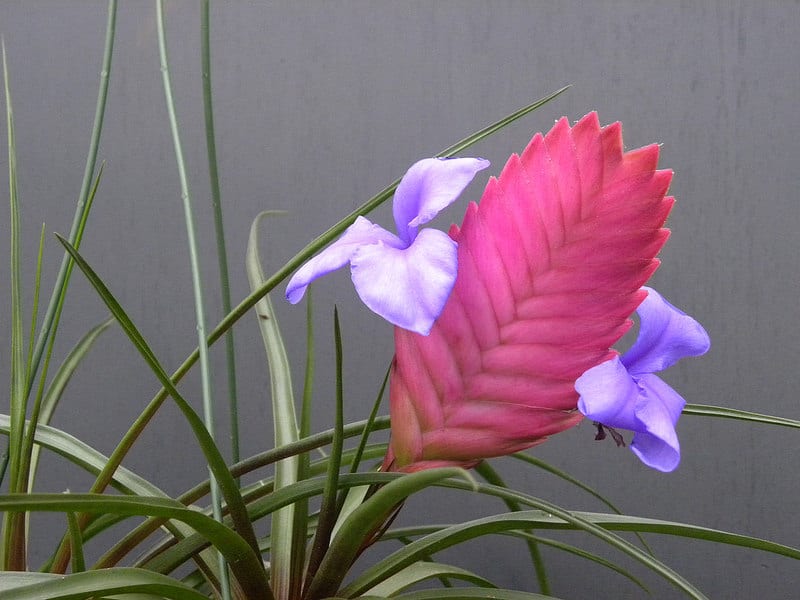This exotic and amazing plant cheers up every interior with its expressive shape and bright color. Pink Quill is easy to take care of and with the minimal effort it will look happy and healthy.

What is Tillandsia Cyanea (Pink Quill)?
Although this exotic houseplant is now labeled under the name Wallisia cyanea, it is still widely recognized by its former name Tillandsia Cyanea or Pink Quill. It is a member of the Tillandsia genus which consists of more than 400 species and they all belong to the Bromeliads family. The most popular cultivated species is certainly the Pink Quill which can be easily purchased in supermarkets or nurseries.
This amazing flowering plant has quill-like, bright pink bracts and arching, leathery, narrow leaves which grow on a stemless rosette. The pink bracts are actually the inflorescence and not technically the flowers. When blooming season arrives, purple-blue flowers occur on the bracts. Pink Quill can grow up to 1.6 ft (0.5 m) but many new dwarf cultivars can grow only 10 in (25 cm) tall.
The native habitat of Pink Quill is Ecuador where the plant is found emerging from trees as an epiphyte.
Epiphyte plants are also called air plants and they all thrive upon another plants, like trees (or even a building!), but using them only as a physical support. They are not parasitic on supporting plants and they obtain nutrients and water vapor from the air.

Pink Quill is a perennial in its native tropical habitat, so you can grow it as a perennial only in temperate regions which have the similar conditions to those in its native areas. The recommended average room temperatures shouldn’t drop bellow 7°F (45°C) and they should remain constant and high. Any temperature drift can damage your Tillandsia.
This is really low-maintenance plant. You just have to put it in a medium-light place with a lot of morning sun and try not to expose the plant to afternoon heat. Use a proper soil for planting, make sure the plant has the appropriate level of humidity and the further care is quite routine and simple.
The Life Cycle of Pink Quill
Many of Bromeliads are monocarpic plants, so as the Pink Quill. That means that plant dies after it had reached maturity. The plant has fulfilled its purpose – it has flowered and has produced seeds.
But, before the plant dies, it usually produces one or more new offsets which will replace the mother plant.
When these pups grow enough to be safely separated from the mother plant and when they are able to thrive on their own, you can transplant them into another pot. Remove the offset carefully, use a clean, sharp knife if needed, and place it into a new pot filled with the soil suitable for Tillandsia.
Eventually, this new plant becomes mature, and then it produces bracts, flowers, and new pups, and the entire circle goes round again.
What Type of Soil to Use for Pink Quill?
Pink Quill is an air plant and doesn’t really need a soil. So, you’re wondering what type of soil you should use when you want to grow it in a pot or a container as a houseplant?
Here’s the solution. Use well-drained potting mix for cacti or orchid with a lot of perlite, humus, sand or orchid bark. The potting mix must be completely lime-free.
Air plants usually don’t require fertilizing cause they get needed nutrients from the air. But if you think your Pink Quill needs more food, you can use a fertilizer for air plants (available on the market), but keep in mind that you should apply the fertilizer on the foliage without pouring it in the soil. Fertilizing once or twice a year will be just fine.
How Often Do You Water Pink Quill?
Since epiphyte organisms use the air evaporation, you should spray the foliage rather than water the soil. Spray the foliage occasionally with filtered water cause Tillandsia plants don’t like chlorine.
The soil should always be a slightly moist, but there is really no need to water the soil every day if you mist the foliage regularly. If you notice brown tips on leaves that is probably the result of dry air. Sprinkle the foliage with water to prevent further damages.

When Does Pink Quill Bloom and Flower?
Pink Quill will bloom once it’s reached maturity. When blooming time arrives, once green bracts become bright pink or even red. Bright violet-blue flowers with three petals occur on the edges of the pink bracts in spring or autumn, but they last very shortly, only for several days. These flowers are 5cm (2 in) big.
The bracts remain pink for many weeks after the flowers had faded. When flowers fade, you should remove them.
How Do You Propagate Tillandsia Cyanea?
As previously said, Pink Quill produces offsets which eventually reach maturity, so the easiest way of propagating Tillandsia Cyanea is to repot these tiny pups when they are big enough to continue developing on their own. You can repot them when they are 2.5-4 inches tall. Be patient cause the plant will need several months to establish the strong root system.
Plants of the Tillandsia genus can also be propagated by seeds. Find some moss and Thuja twigs, mix them together and form a bundle. Tie the bundle up with a wire or a string, and place the seeds into the bundle. Sprinkle it with water, let it hang in moderate-light place with a good air circulation, and mist it occasionally until seeds germinate.
Is Pink Quill Toxic to Animals?
Pink Quill looks extremely exotic so people often think it’s poisonous and toxic to animals and pets. But, don’t worry cause this is a pet-friendly plant. The plant is non-toxic for dogs and cats.
Although cats love to chew Pink Quill leaves occasionally, don’t be worry cause the plant can’t poison your cat, it will only make her feel a bit sick.